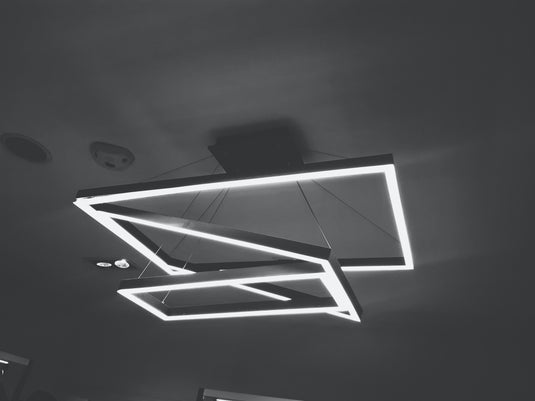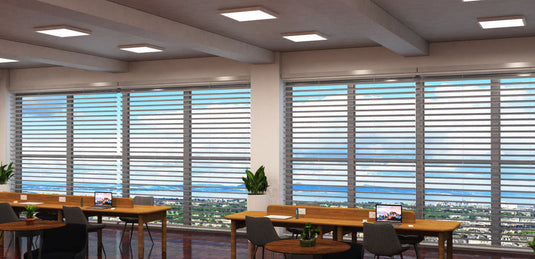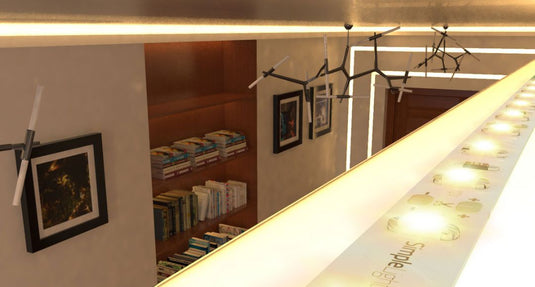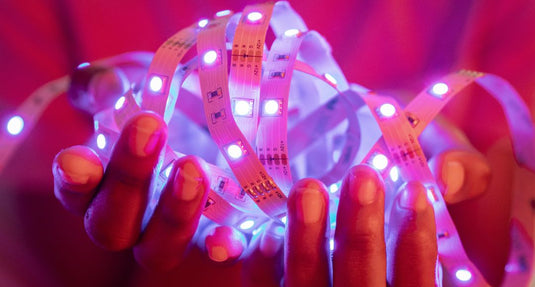LED light therapy has the great ability to stimulate our brain through exposure to a light source and its colours, which induces different emotional states. Studies have shown among participants that the level of light affects not just the mood but the mental health of people.
But how does LED light therapy influence it, and how can you adjust the lighting in your establishment to improve it? Depending on the type of smart lighting colours used, the light can excite, kindle passion, impress and promote radiant skins, cure, and a healthy body system.
The Effects of Lighting on Mood
Knowing how to strategically arrange and how to adjust the lighting source can certainly influence the mood of the perceiving subject, generating in customers a feeling of calm and tranquillity.
The colour of LED light, for example, can bring about a series of mood changes that can affect the customer and induce them to buy or leave one shop and take refuge in another.
You must therefore be very careful when planning the light to choose the colour of the light that you will adopt very carefully to avoid anxious mood induction or sad mood induction. These are the main factors you need to consider:
- Functionality of light
- Materials present
- Duration of ignition
Warm Toned Vs. Cold Toned Lighting
The Warm Tones
The warm tones can produce a stimulating action capable of accelerating cardiac and respiratory activity. For this reason, they are ideal for encouraging an active and vital reaction.
The lights with a warm colour temperature stimulate happiness, concentration, productivity, and therefore mental activity. You can use these colours in environments such as kitchen lighting, living room lighting and office lighting.
The Cold Tones
The cold colour temperature is certainly ideal for relaxing environments, where you can relax and unwind away from stress of all kinds. It is perfect in environments such as the bedroom, the TV area, a club, or the music room.
However, be careful not to overdo it with the colour temperature you will use, in order not to risk making the location too aseptic and obtaining the 'ambulatory' effect. This leads to the arousal of negative mood states in people.
How to Create the Right Atmosphere for Any Environment
Based on what has been studied so far about the fundamental importance of light in every room for the well-being and comfort of your client. Here are the general mood induction procedures for optimally lighting and creating the right atmosphere for each environment:
Entrance lighting
The entrance is considered a space of separation from the rest of the house and, as such, it is little lived.
In this area, the use of applique or pendant lamps is functional to create low and warm light, or table lamps where the entrance includes the presence of entrance furniture or consoles with containers for emptying pockets. For example, whose brightness must however not be very intense and with warm tones to be welcomed by the light when you enter the building.
You need to consider the lighting in the cosy ambience group for this.
Hallway lighting
In the corridor, it may be useful to include hidden spotlights or wall lamps which would help you, also in this case, to illuminate and create an atmosphere, especially if associated with small aligned squares that can make you take a small suggestive journey on an emotional level.
This would help to create a relaxing and welcoming lighting mood induction for guests and customers to your establishment.
Lighting for the living room or Reception
Here you are in the highlight of every home, hotel, or any other establishment where most of the time is usually spent, where the greatest numbers of activities take place and it is the decidedly most representative space to welcome guests.
For these reasons, the living area needs particular attention in your project. You can use chandeliers, spotlights, or wall lights to achieve a comfortable environment.
Another element to take into consideration is the romantic atmosphere. You must provide a second lighting possibility in your lighting project for the living room, as this can help to create a more intimate and romantic atmosphere, to allow your customer to enjoy a light that perfectly supports this type of emotion.
Bedroom lighting
Let’s start by remembering that the bedroom is not just for sleeping, so don’t think about lighting only in this sense. However, the importance of cosy ambience group lighting for this room is even greater than for other rooms.
In this room, therefore, a lot of light will be needed for the day and soft and soothing light for the evening. For this purpose, the abat-jours are irreplaceable, although the wall lights and adjustable LEDs also create a beautiful and functional lighting effect.
Dimmable lights are also appropriate in the bedroom for guests to adjust to different levels of relaxation based on the time and their mood.
Bathroom lighting
Bathrooms of malls, hotels, schools, airports and many more establishments require top-notch lighting so that customers can feel at ease while using the bathroom. For the bathroom lighting, the basic rule is: to light up the make-up and shave mirrors. You should also pay attention to the IP index ratings peculiar to bathrooms.
In the bathroom, spotlights on the ceiling and lighting in the false ceiling are very useful. This means that the luminous bodies arranged between the wall and the ceiling, without being visible, are the most usual and traditional solutions, but also the most functional and aesthetically valid.
The light on the mirror should be placed on the sides of the mirror and not at the top, so as not to create unwanted optical effects, such as shadows on the nose or eyes lower than the head, as well as avoid shooting the light in the eyes of those who use the mirror. With the risk of causing physical damage as well as emotional damage.
A bathroom with a bathtub is not only used for self-care and hygiene prompting activities but also a relaxing environment, in which you can enjoy a little peace after a busy day and stop for a few minutes to enjoy the silence.
For this purpose, it will be useful to use dimmable lighting, which allows your client to set a soft and neutral ambient group of light to create the right atmosphere to support his relaxation.
Conclusion
Led light therapy is very functional in overcoming anxious mood induction or sad mood induction.
To avoid the risk of arousing a negative mood in customers, you can get the help of an expert to advise you on the lights to purchase. You can also buy perfect LED light bulbs for your establishment from LED Supplier.




